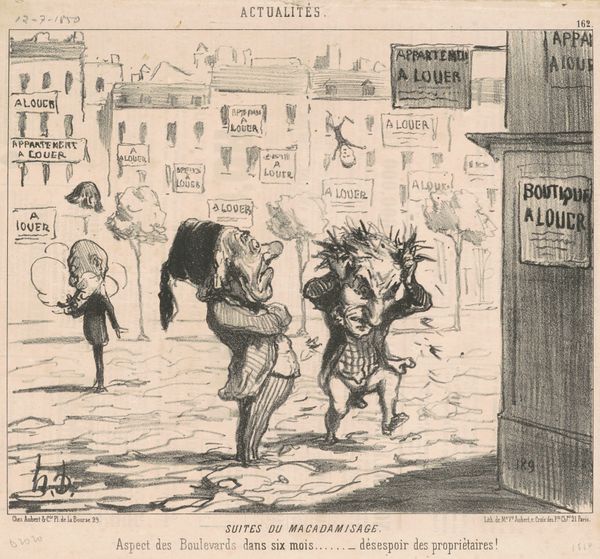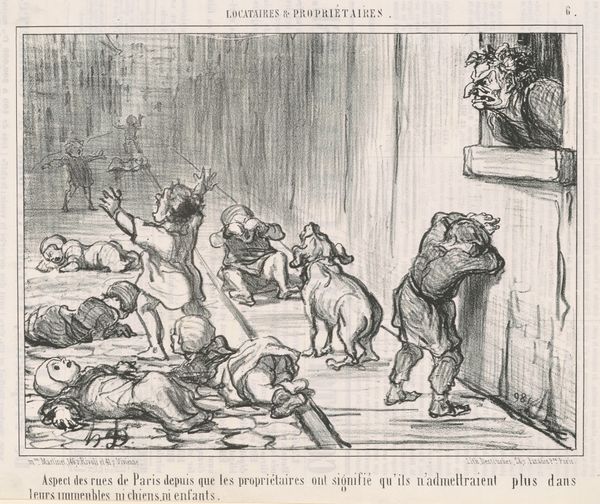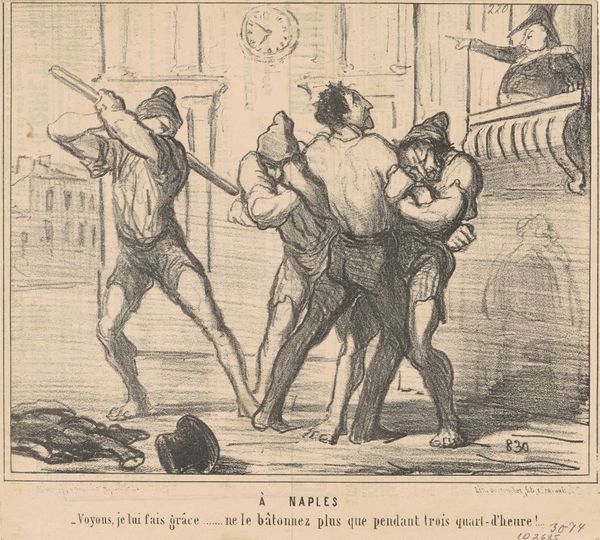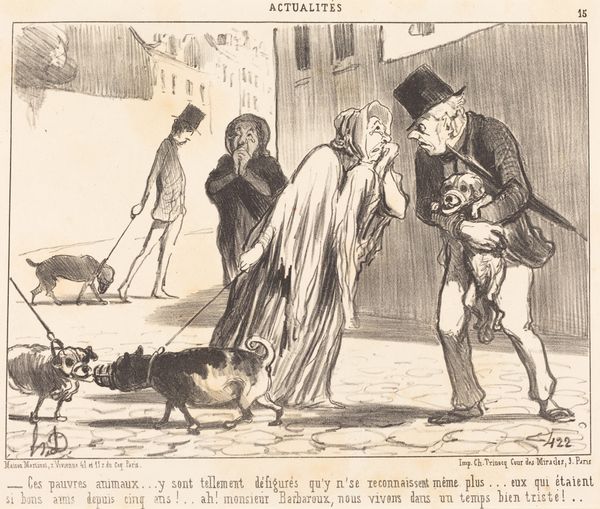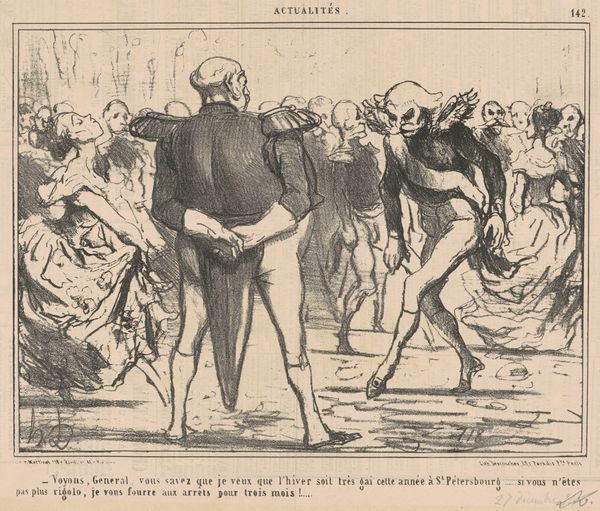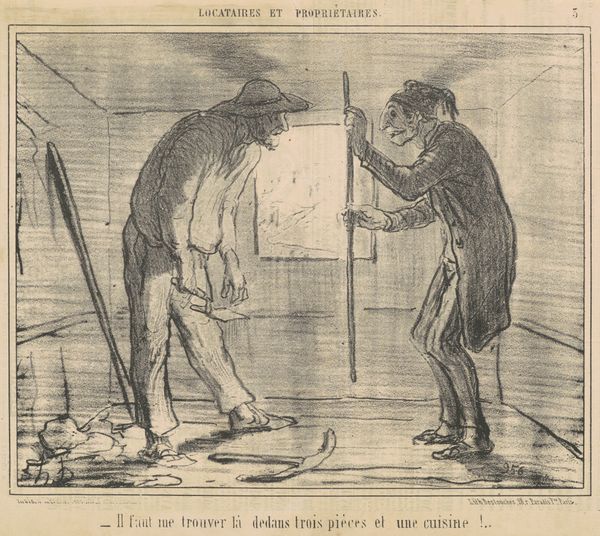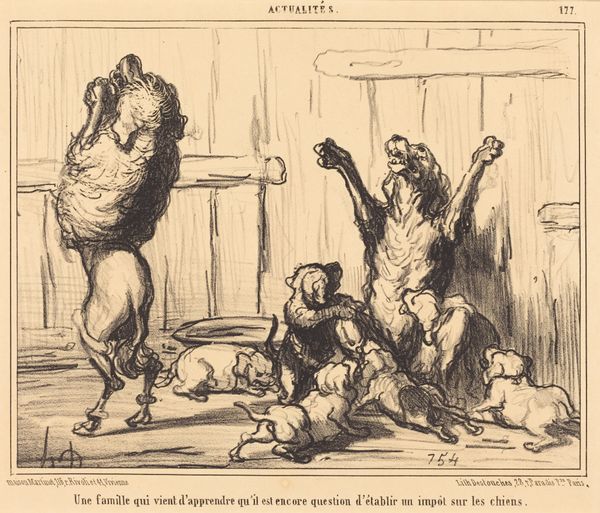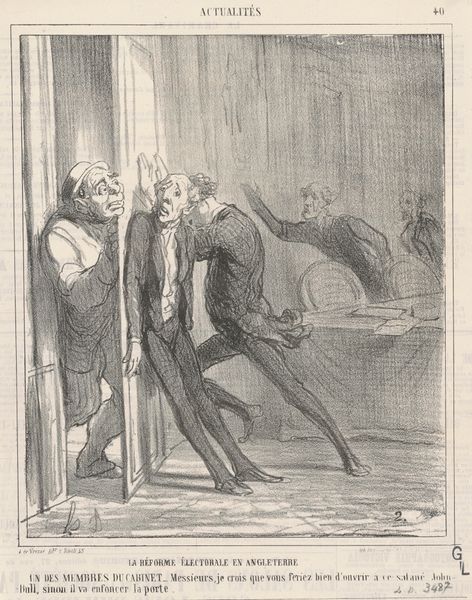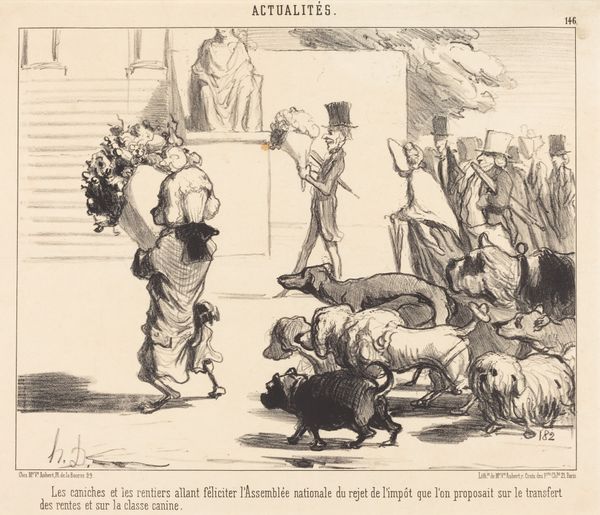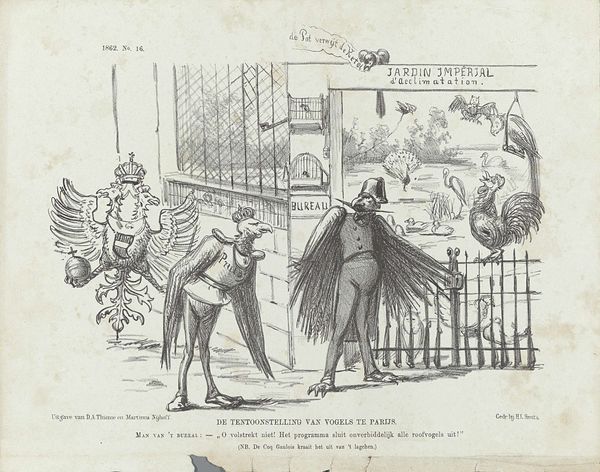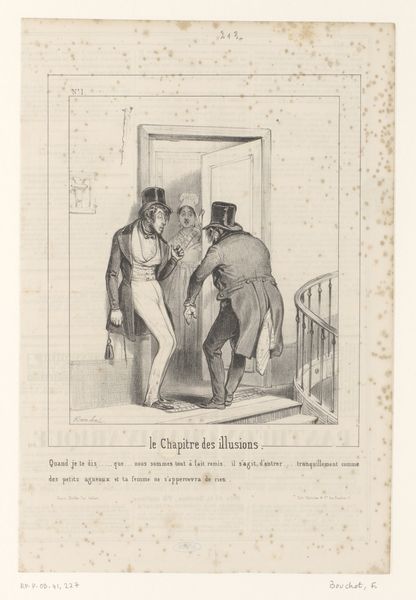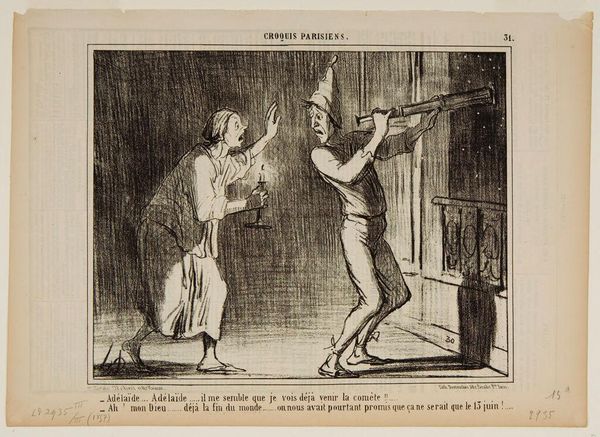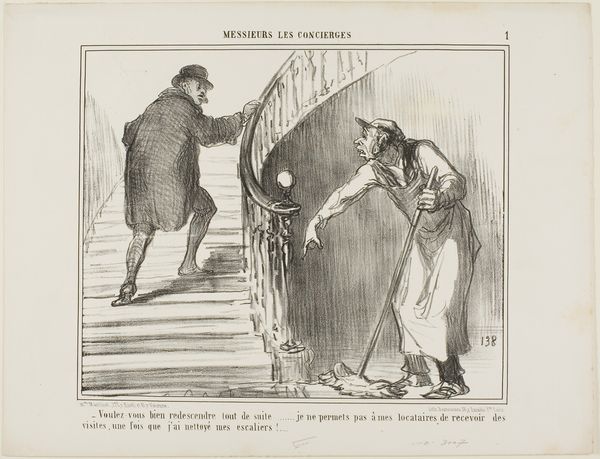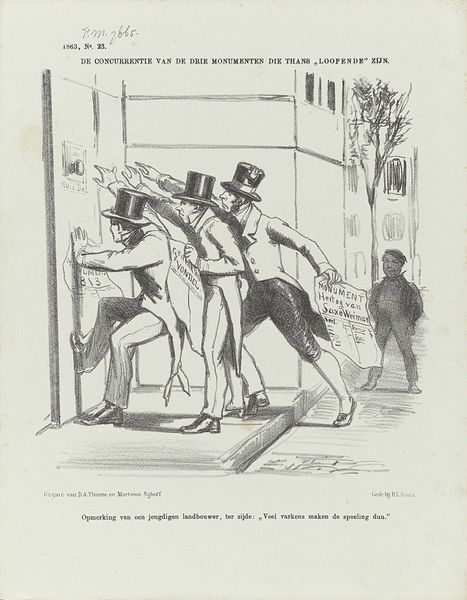
lithograph, print
#
lithograph
# print
#
caricature
#
romanticism
#
genre-painting
Copyright: National Gallery of Art: CC0 1.0
Curator: I'm struck by the immediate distress portrayed in this lithograph, dating from the 19th century by Honoré Daumier. The long, thin lines seem to convey panic and violence so effectively. Editor: The means of its production speak to its purpose, doesn't it? A print allowed for wider circulation, implicating Daumier’s commentary on Parisian society and perhaps, class relations as they played out materially on the street. The rough quality further amplifies the grit of its subject. Curator: The scene depicts, on one level, violence enacted on animals; dogs hunted and killed. However, consider the upright canine on the balcony. What does it symbolize as it witnesses the turmoil, seemingly declaiming some unseen injustice? It evokes the ancient theatrical character, Andromache, railing against fate. Editor: Let’s remember Daumier’s skill with lithography; the gradation in the grey wash builds up a sense of volume. What is most poignant for me, however, is the physical presence of the figure dragging the dead animal; the man embodies labor, implicating society’s complicated relationship with these creatures, with animals becoming almost utilitarian within an expanding urban landscape. Curator: It is more than utility! It delves into humanity’s cruel streak; note how the hunters actively celebrate in a way which implicates all in a dark morality play. The visual vocabulary draws upon long traditions of depicting human struggle, recasting it within this contemporary, urban environment. Editor: Yet, in a mass produced image we have immediate distribution! By understanding it as such, the image functions as a prompt for those same observers of injustice, to potentially act, and change this violent cycle… Or maybe to merely sell newspapers, I admit! But consider too: from a stone block, a poignant sense of struggle rises, a dark material critique that makes it hard to simply dismiss what is depicted, nor its creation as merely neutral. Curator: Agreed, understanding the print's wide reach allows a powerful voice of the animal's lament. A visceral critique indeed, where the line between the symbolic and lived pain dissolves. Editor: Exactly. Through careful examination of materiality and wider distribution of the artwork itself, we come to truly consider, on a grander level, society and ethics together.
Comments
No comments
Be the first to comment and join the conversation on the ultimate creative platform.
